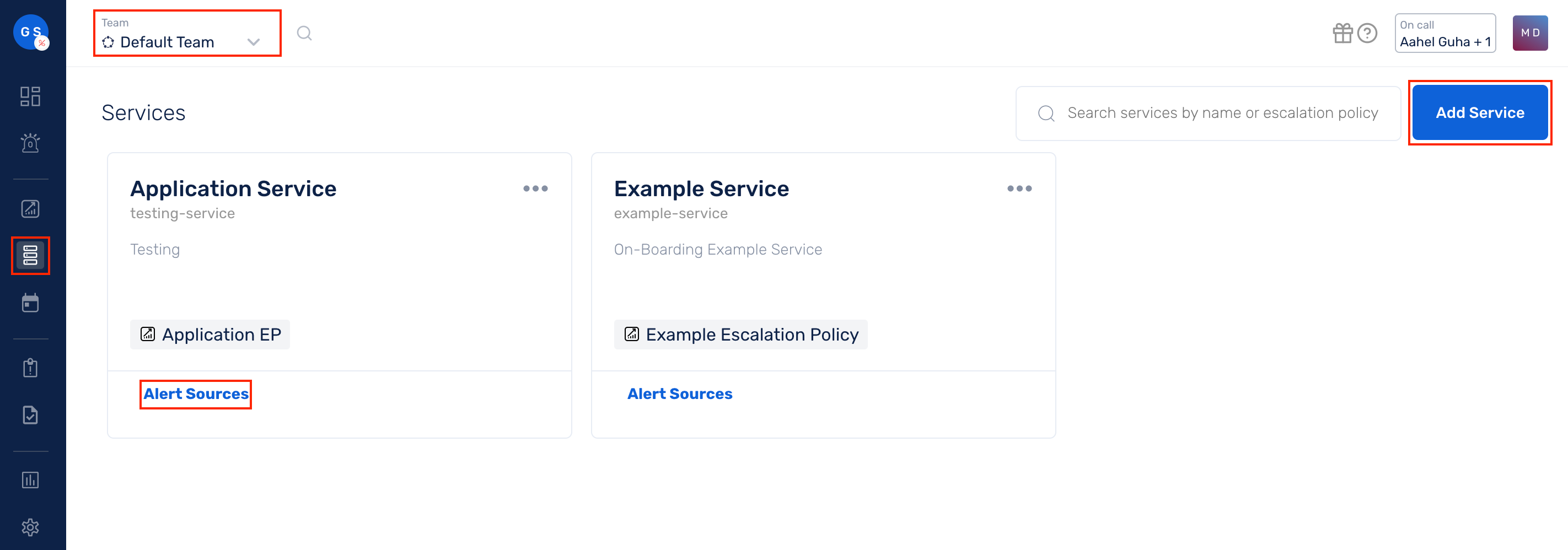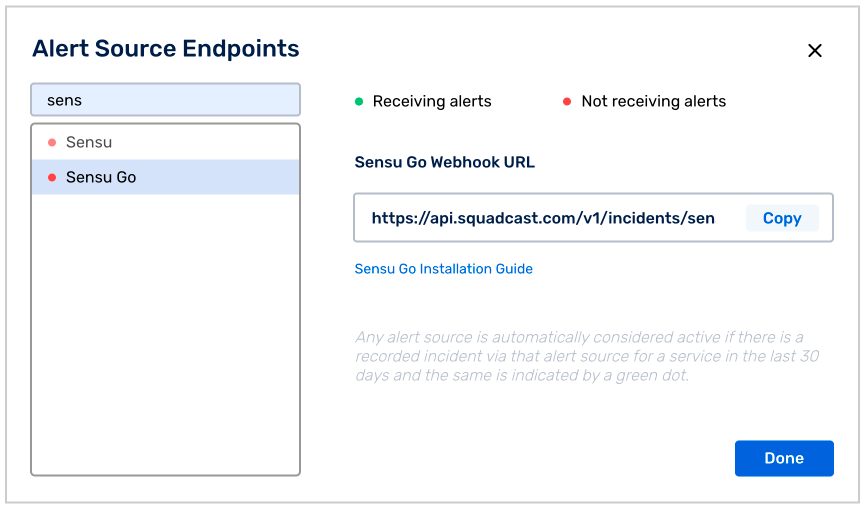Sensu Go
Follow the steps below to configure a service so as to push related alert data from Sensu Go onto Squadcast.
Squadcast will then process this information to create incidents for this service as per your preferences.
Using Sensu Go as an Alert Source
(1) From the navigation bar on the left, select Services. Pick the applicable Team from the Team-picker on the top. Next, click on Alert Sources for the applicable Service

(2) Search for Sensu Go from the Alert Source drop-down and copy the Webhook URL

For an Alert Source to turn active (indicated by a green dot - Receiving alerts against the name of the Alert Source in the drop-down), you can either generate a test alert or wait for a real-time alert to be generated by the Alert Source.
An Alert Source is active if there is a recorded incident via that Alert Source for the Service in the last 30 days.
Squadcast handler installation
If you’re using sensuctl 5.13 with Sensu Backend 5.13 or later, you can use the following command to add the asset:
sensuctl asset add sensu/sensu-squadcast-handler
Installation from source
Download the latest version of the sensu-squadcast-handler from releases, or create an executable script by cloning the sensu-squadcast-handler repository. From the local path of the sensu-squadcast-handler repository run the following command:
For the command mentioned below to work, you would need Go Programming Language installed beforehand.
go build -o /usr/local/bin/sensu-squadcast-handler
Create a squadcast-handler.yaml file like the following :-
type: Handler
api_version: core/v2
metadata:
name: squadcast
namespace: default
spec:
command: sensu-squadcast-handler
env_vars:
- SENSU_SQUADCAST_APIURL= <Squadcast Alert Source Url>
runtime_assets:
- SquadcastHub/sensu-squadcast-handler
filters:
- is_incident
timeout: 10
type: pipe
Make sure to replace <Squadcast Alert Source Url> with the webhook url you copied from Squadcast.
Then run the following command :-
sensuctl create -f squadcast-handler.yaml
While creating checks for your client systems make sure to add squadcast as a handler. An example check using the squadcast handler is shown below :-
api_version: core/v2
type: CheckConfig
metadata:
namespace: default
name: health-check
spec:
command: check-http -u http://localhost:8080/health
subscriptions:
- test
publish: true
interval: 10
handlers:
- squadcast
Now whenever an event is triggered in Sensu Go , an incident will be created automatically in Squadcast. Also when an event is resolved in Sensu Go the corresponding incident gets auto-resolved in Squadcast.